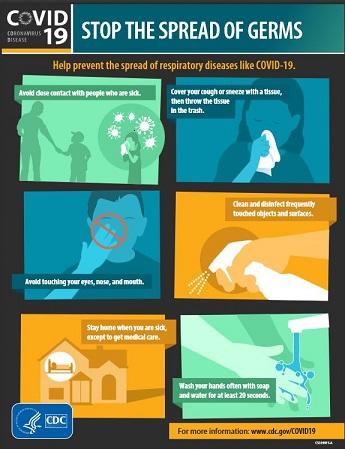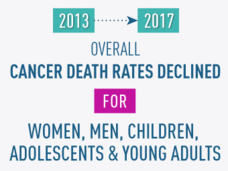| New from NCI |
| Coronavirus: What People with Cancer Should Know |
 |
|
Cancer and its treatment may increase your risk of having serious health problems from a coronavirus infection. Learn ways to protect yourself and what you should do if you have symptoms of an infection. |
| Cancer Death Rates Continue to Decline |
 |
|
The Annual Report to the Nation on the Status of Cancer for 2020 finds that the number of deaths from cancer in the United States continues to go down. Learn more about cancer in men and women, different racial and ethnic groups, and children, teens, and young adults. |
Improving Kaposi Sarcoma Treatment in Africa
For people with advanced AIDS-related Kaposi sarcoma in sub-Saharan Africa, results from a large clinical trial are expected to change treatment. Learn more about the special challenges of treating cancer in that region of Africa and how the results of this trial might help. |
Video: Prostate Cancer Statistics
Learn about the rates of new cases, survival, and deaths from prostate cancer in the United States. This video also describes symptoms and treatment methods for this cancer. |
| Combined Biopsy Method Improves Prostate Cancer Diagnosis |
 |
|
The accuracy of prostate cancer biopsies can be hit or miss. But NCI has developed a new method of performing biopsies that may greatly improve prostate cancer diagnosis. |
| Workshop Highlights Range of Research Advances |
 |
|
Researchers taking part in the Cancer Moonshot℠ gathered last fall to share their progress on a range of projects. Read how researchers are advancing immunotherapy for adults and children and learning more about how tumors grow, spread, and respond to treatment. |
New Insights into Tumor Development
In a new study, researchers mapped the timing of the genetic changes that most often drive 38 cancer types. Learn how this research may lead to ways of finding cancers much earlier than is now possible. |
Differences around the Globe for Children with Retinoblastoma
Cases of retinoblastoma, an uncommon cancer of the eye, that occur in low- and middle-income countries often have a poor prognosis. Read about the results from a large study that suggests some clues about why.
|
| PDQ Cancer Information Summary Updates |
|
Treatment of Cancers of the Reproductive and Urinary Systems in Children and Teens
We’ve created separate summaries for each of the cancers covered in Unusual Cancers of Childhood Treatment. This list highlights treatment for childhood cancers of the reproductive and urinary systems:
Unusual Cancers of Childhood Treatment will be removed from the website on April 17, 2020. See the full list of childhood cancer summaries.
|
| Drug Information Updates |
New Treatment for Rare Type of Soft Tissue Sarcoma
We’ve added a new drug summary for tazemetostat hydrobromide (Tazverik). The Food and Drug Administration (FDA) recently approved it to treat certain adults and children aged 16 years or older with locally advanced or metastatic epithelioid sarcoma, which is a rare type of soft tissue sarcoma. |